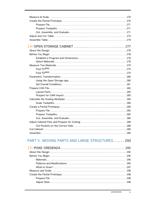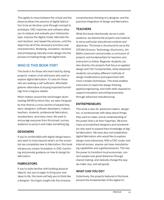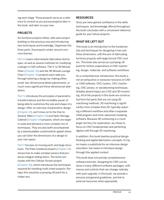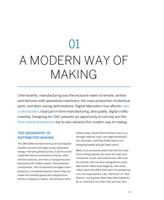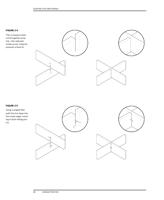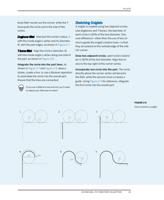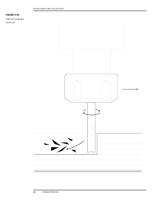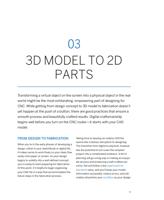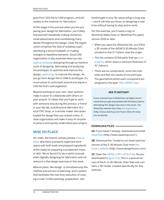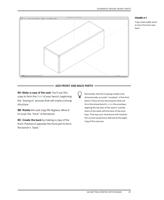
5: END TO FACE TO EDGE
An end-to-face-to-edge connection occurs
when a third part sits atop an end-to-face
connection, creating a tremendously strong,
integrated joint. A combination of the end-to-
face and edge-to-edge, this connection could
also be called a compound finger or com-
pound slot and tab connection.
Using an end-to-face-to-edge connection
requires some extra design and planning to
ensure that it has a flush alignment, is struc-
turally viable, and can be physically assem-
bled. Close attention must be paid to the
respective lengths of fingers, slots, and tabs.
EIGHT BASIC CNC JOINT CONDITIONS
FIGURE 2-20
An end-to-face-to-edge
connection, or “com-
pound finger”
6: THROUGH
A through connection (also known as a cross-
lap) aligns intersecting slots on x and y cross-
pieces, so that each appears as if it’s passing
through the other. The slots in each piece are
ideally the same depth at the midpoint, which
preserves a maximum effective load carrying
area.
The real power of these connections
comes when they are used serially to produce
a frame or two-way structure. With larger
assemblies, you will get added structural per-
formance by placing upward-facing slots on
the short-span members. This way the short-
span members are effectively “carrying” the
longer spanning components. When locating
slots on framing members, be sure to avoid
“weaving,” which would make the structure
physically impossible to assemble.
FIGURE 2-21
These crosspieces are
an example of a
through connection
02/END MILL TO FURNITURE COLLECTION
51













